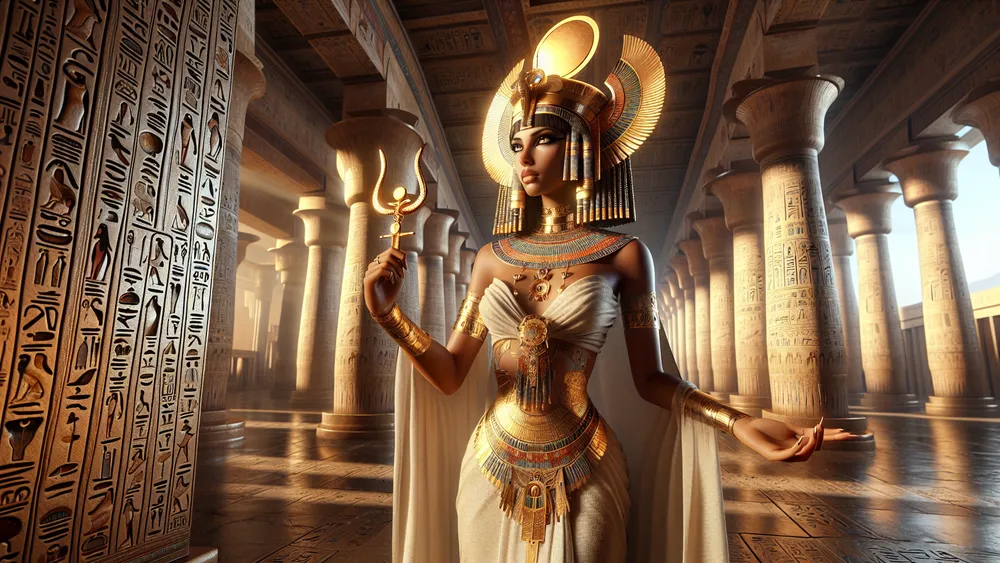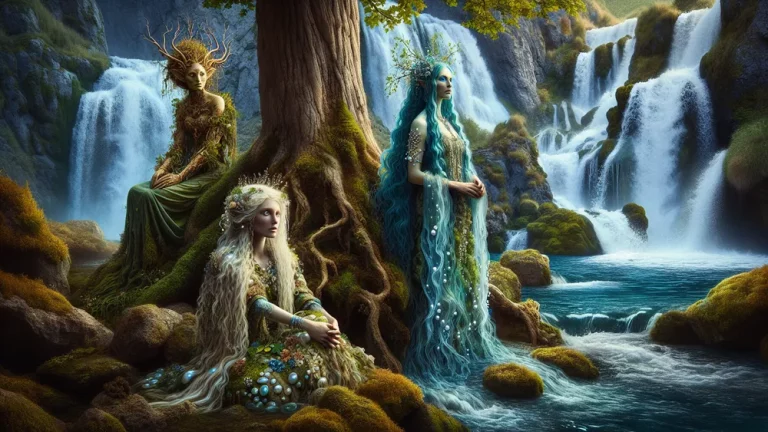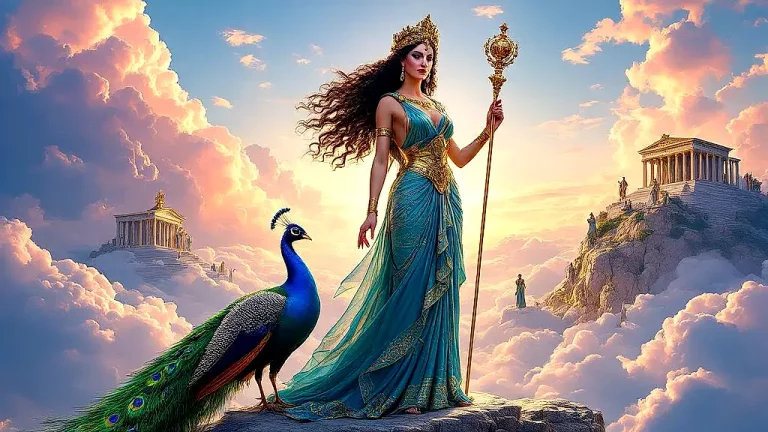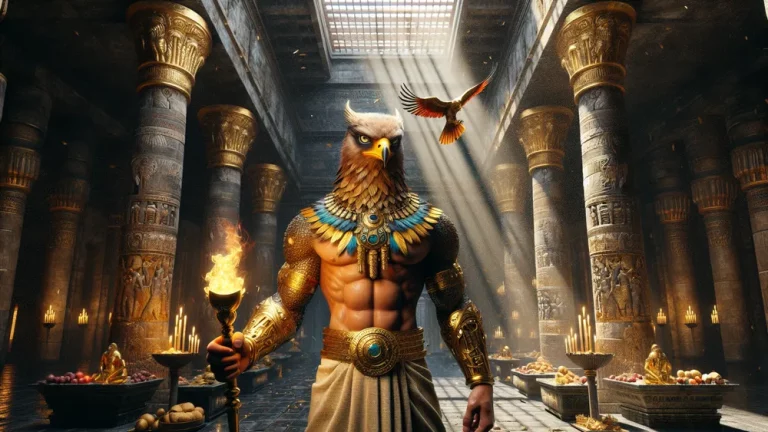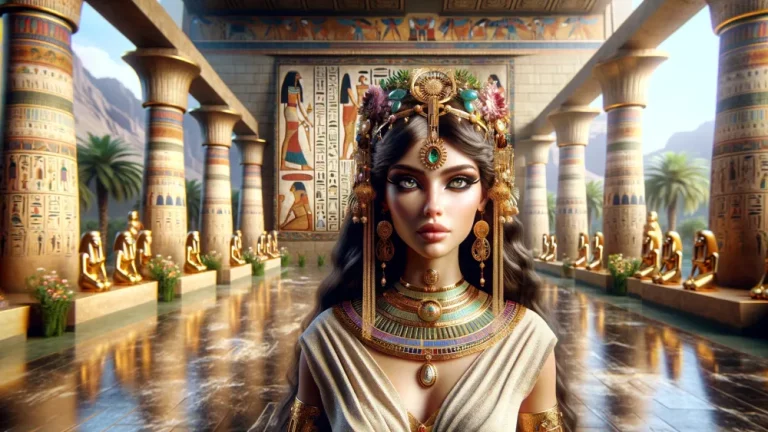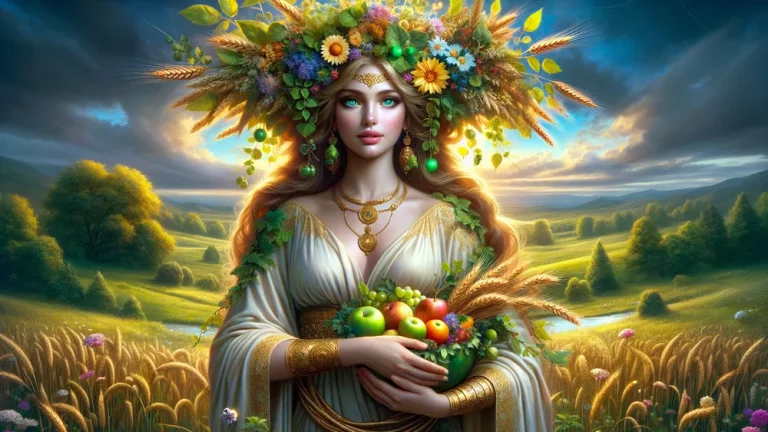Raet-Tawy: The Female Solar Deity in Ancient Egypt
Raet-Tawy, a not as well-known yet important god in Egyptian stories, shows the female side of the sun god Ra. She is often less recognized than other male gods. Raet-Tawy shows how the sun can care and give life; she is important among Egypt’s gods.
Key Points:
- Raet-Tawy is a female solar deity in ancient Egypt, often connected with the sun god Ra.
- She symbolizes the caring and life-giving aspects of the sun.
- Raet-Tawy was worshipped during the New Kingdom in Egypt and is linked to temples in Heliopolis and Thebes.
- She is often represented with a sun disk on her head and a cobra, symbolizing power and divine rule.
- Raet-Tawy played a key role in Egyptian myths as the female partner to Ra and in maintaining the natural order.
- Worship of Raet-Tawy involved rituals, offerings, and prayers at temples and during festivals in ancient Egypt.
- In modern times, Raet-Tawy is seen as a symbol of feminine power and solar energy, inspiring art, literature, and popular culture.
This article tells about her start, pictures of her, how people used to pray to her, and how she affected other groups and what people think of her now. We hope to tell about different parts of Raet-Tawy, letting us see why she mattered in old Egypt and why she is still remembered.
Raet-Tawy: Overview and Key Facts
| Main Point | Details |
|---|---|
| Name | Raet-Tawy (some call her Raet or Rat too) |
| What She Does | Female sun god, works with the sun god Ra |
| Signs | Sun disk, cobra standing up, symbol of life (ankh) |
| How She Looks | Often shown with a sun disk on head, sometimes with a cobra snake |
| Why She’s Important | Shows the caring and life-giving parts of the sun |
| Connections with Other Gods | Linked to Ra and Amon, seen as female side of Ra sometimes |
| Times People Worshipped | Mostly during New Kingdom times, is known in older times too |
| Important Temples | Temples in Heliopolis and Thebes |
| Big Events | Parties about the sun and fertility celebrations |
| Modern Views | Seen as a sign of feminine power and solar energy in today’s world |
In this blog post, we will look into the interesting world of Raet-Tawy, check out her start, see the pictures showing her, and understand her importance in old Egyptian stories.
Getting to Know Raet-Tawy
First, we will check out where Raet-Tawy is from and why she has a special place in old Egyptian stories.
Where She Comes From and Why She Matters
Raet-Tawy, meaning “Raet from the Two Lands,” comes from the rich past of old Egypt’s stories where she is known as the female half of the sun god Ra. She starts from the New Kingdom time, though she was known before too. Raet-Tawy’s importance is in her showing the caring and life-giving parts of the sun, important for food and daily life in old Egypt.
She got worshipped in different times, but most during the New Kingdom. And, you can understand her importance by seeing her as the sun’s soft, life-giving warmth, unlike Ra’s strong, commanding presence. Her worship included:
- Temples and Sacred Sites: Special places for actions and offerings.
- Festivals and Ceremonies: Events that honored her life’s role.
- Priests and Priestesses: Religious people managed her temples.
Understanding these parts helps you see why Raet-Tawy was special to the people of old Egypt.
Raet-Tawy, the caring and life-giving aspect of the sun in ancient Egypt, was highly esteemed for her importance in sustaining food and daily life, symbolizing warmth and nurturing unlike the commanding presence of the sun god Ra.
How She’s Shown and What Symbols She Has
In old Egyptian art and objects, Raet-Tawy is mostly showed with a sun disk on her head, and sometimes she has a uraeus, which is a cobra standing up that means power and divine rule. These pictures show her link to the sun and her job as a sun goddess. Think of her as a bright figure, showing the sun’s caring warmth, like how the sun’s rays give life to plants. The signs linked to Raet-Tawy carry a lot of meaning and show her divine traits:
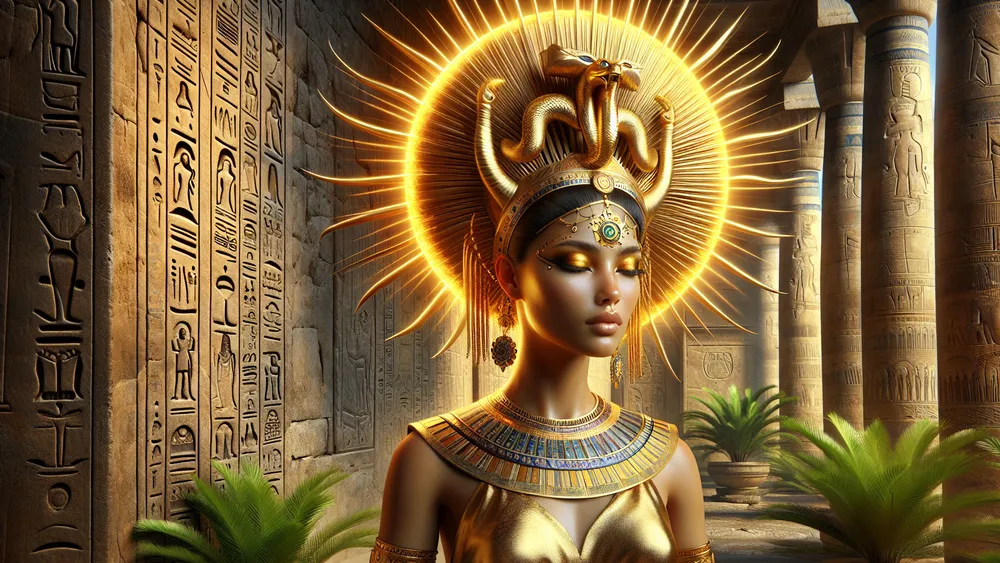
- Sun Disk: Stands for the sun and its life-giving power.
- Uraeus (Standing Cobra): Means safety, royalty, and divine rule.
- Ankh: A sign of life, often in the hands of gods, showing forever life and energy.
By knowing these pictures and signs, you can better understand Raet-Tawy’s importance in old Egyptian life and beliefs.
Her Part in Egyptian Myths
Raet-Tawy has a special spot in the group of Egyptian gods as the female partner to Ra, the sun god. She shows the caring and life-giving parts of the sun, matching Ra’s more strong and firm traits.
In the big story of Egyptian myths, Raet-Tawy stands for the balance of power and softness, just like how the sun can be both warm and strong. Her role goes beyond just being a partner; she is an essential god who keeps life going and the natural order.
This view of two sides is important in understanding the whole way the old Egyptians saw their gods, where every god or goddess had a unique and fitting role in the world.
Raet-Tawy’s link with other gods, especially Ra and Amon, shows her importance more. As Ra’s female partner, she is often showed beside him, showing their shared rule over the sun and its life-giving powers. Her tie with Amon, another key god who later joined with Ra to turn into Amon-Ra, shows her key role in the divine order. To help you see her place among other sun gods, here is a table:
| Deity | Part in Myths | Symbols |
|---|---|---|
| Raet-Tawy | Female partner to Ra, caring part of the sun | Sun disk, Cobra, Ankh |
| Ra | Sun god, king of gods | Sun disk, Bird |
| Amon-Ra | Combined god of Amon and Ra, top god | Sun disk, Ram |
| Hathor | Goddess of love, music, and being a mom, also tied to the sun | Sun disk, Cow horns |
Knowing these links and comparisons, you can see how Raet-Tawy fits into the wider story of Egyptian myths and the complex web of godly roles.
How People Worshipped Her
We now know Raet-Tawy’s role and importance. Hence, we should look at how old Egyptians showed respect for her through worship.
Temples and Special Places
Raet-Tawy was respected in several important temples and holy places across old Egypt, with some of the main ones being the Temple of Karnak and the Temple of Luxor. These big buildings were not only for worship. Also, they were wonders that showed the Egyptians’ respect for their gods. Think about walking among the tall columns and large courtyards, feeling the weight of history and spirit in every stone.
The Temple of Karnak, for instance, had a huge area for Amon-Ra, where Raet-Tawy was also honored. Its hall, with its many big columns, showed the first swamp from which everything came, showing Egyptians’ belief in the link of their gods.
In the same way, the Temple of Luxor, with its big columns and statues, was a main point for religious events and festivals. These places were not only for worship; people came there to celebrate, pray, and be with others.
Rituals and Special Events
Rituals and special events for Raet-Tawy were complicated and very meaningful. Priests and priestesses had a big role, working as go-betweens for gods and people. Daily, they gave gifts. These included food, drink, and incense. They did this to honor Raet-Tawy and to get her favor. Think of a calm temple scene. Priests, in white linen, chant hymns and prayers while giving offerings on altars with flowers and sacred symbols.
These rituals were more than devotion, being also a way to keep world balance since Egyptians thought gods’ favor was crucial for their society’s well-being.
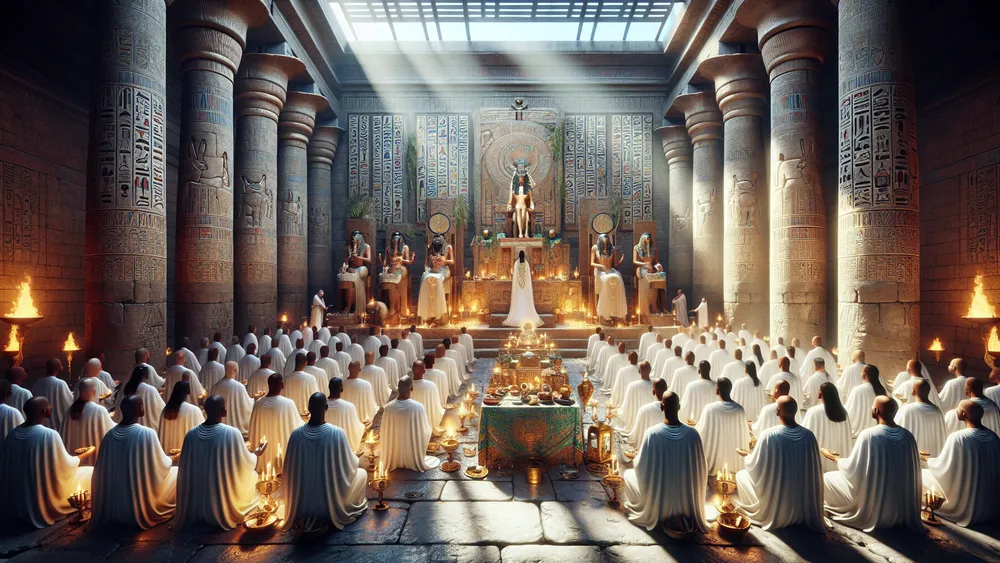
Key festivals for Raet-Tawy were important events. They brought people together for celebration and worship. These often happened at the same time as important sun events, like the summer solstice, showing Raet-Tawy’s place in the natural cycle. One big festival was the “Feast of Raet-Tawy,” which had parades, music, dancing, and eating together. During these events, Raet-Tawy’s statue would be paraded in the streets, letting people connect directly with the goddess. Here are some key festivals and their importance:
- Feast of Raet-Tawy: Celebrated the goddess’s life-giving powers and her role in the sun’s cycle.
- Summer Solstice Festival: Marked the peak of the sun’s power, honoring Raet-Tawy’s impact on the natural world.
- New Year Festival: Linked to the Nile’s yearly flooding, symbolizing renewal and fertility, with Raet-Tawy having a key role.
These festivals were not only religious but also social events that made community bonds stronger and cultural identity clearer.
Priests and priestesses played a vital role in performing complex rituals and special events to honor Raet-Tawy, seeking her favor for the well-being of Egyptian society.
Offerings and Prayers
People gave many kinds of offerings to Raet-Tawy, full of meaning, because she was a many-sided solar goddess. These offerings included food things such as bread, fruits, and vegetables. Also, they poured water, wine, and milk. They used incense too – like frankincense and myrrh – to clean the place and make the goddess happy.
Think of a worshipper putting these things on an altar, and its fragrant smoke going up like a bridge between the earthly world and the godly world. Prayers and songs for Raet-Tawy often called upon her protective and caring nature. A typical prayer might start with, “O Raet-Tawy, bright goddess of the sun, give us your warmth and light,” followed by special requests for blessings or help.
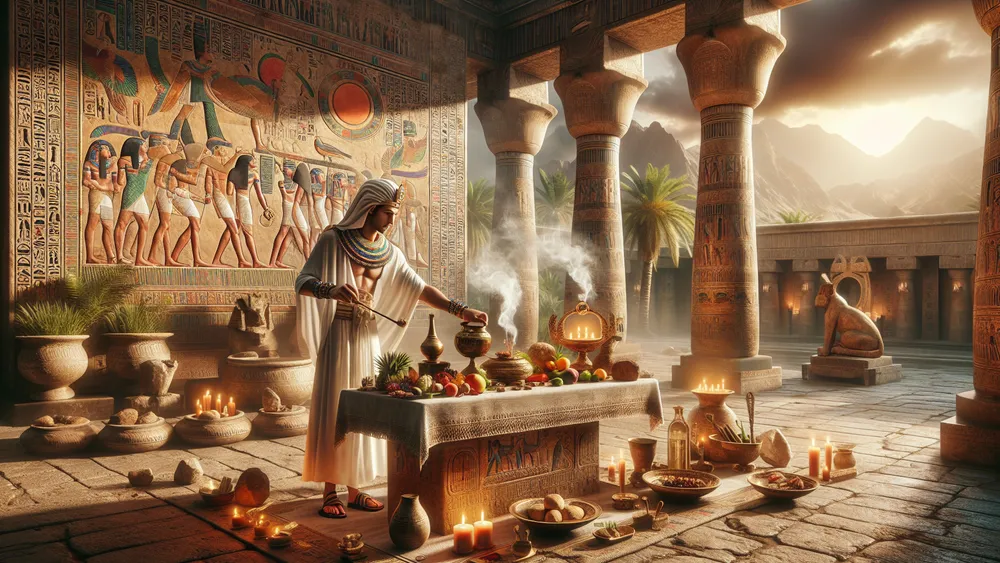
Songs would praise her role in the cosmic order, for example, “Hail Raet-Tawy, who comes up in the east and goes down in the west, your trip brings life to everyone.” These offerings and prayers were truly important for daily worship. They helped people stay close to the goddess and made sure she showed favor.
Raet-Tawy in Art and Writing
We can look at how people in old times showed Raet-Tawy in art and writing. This will help us see more about her importance. Also, it lets us see how they respected her.
How Artists Showed Her
Raet-Tawy often had a solar disk on her head, showing her link to the sun. Usually, she was shown as a woman with a rearing cobra on her forehead. This meant royalty and divine authority. Her images changed over time because of shifts in religious beliefs and art styles. Early on, she might be shown simply, focusing on her as a sun goddess.
Later, as art techniques got better, her pictures got fancier. They added detailed elements and more symbols like the ankh, which means life, and the scepter, meaning power. Moving in an old temple, you might see a picture of Raet-Tawy, her calm face surrounded by the bright solar disk. Her stance shows both grace and strength.
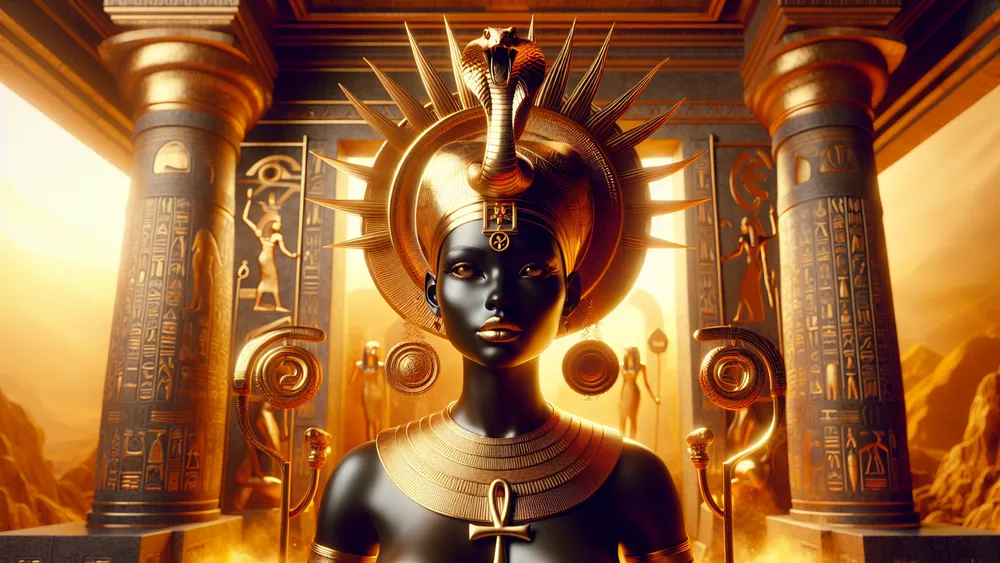
These pictures not only respected her but also acted as a visual narrative of her importance among the Egyptian gods, changing to reflect the society’s shifting connection with their gods.
Mentions in Ancient Texts
Raet-Tawy is mentioned in many old Egyptian writings, like religious hymns and temple carvings and stories about gods. In these writings, she is often praised for her role as a solar deity and her link with the sun god Ra.
For instance, in the Pyramid Texts, which are some of the oldest holy writings around, Raet-Tawy is called upon to give protection and guidance to the dead kings on their trip to the afterlife. Her part in stories is also important; she is sometimes shown as Ra’s partner, helping him in his daily journey across the sky.
Think about reading an old scroll where Raet-Tawy is shown as a bright goddess who lights up the world with her presence, making sure day and night keep going without stopping. These writings not only show how important she was among the Egyptian gods but also give ideas about how the ancient Egyptians understood and respected their gods.
Her Impact on Later Times
Next, we can look into how Raet-Tawy’s impact spread beyond Egypt and how she was seen later.
During the Greco-Roman Times
They still worshipped Raet-Tawy, but her importance and how she looked went through big changes. As Egyptian traditions mixed with Greek and Roman influences, Raet-Tawy was often merged with gods like the Greek goddess Hera and the Roman goddess Juno. New ideas about her role and traits came from this blending.
For instance, she might be shown with things common in Greco-Roman art, like more realistic features and fancier clothes, reflecting the art styles of that time. Think of a statue of Raet-Tawy from those days, where her usual solar disk is matched with a flowing Greco-Roman robe, showing the mix of traditions.
These changes show how Raet-Tawy’s worship changed to fit the changing religious world, keeping her important while also showing the wider cultural shifts of the time.
What People Think of Her Today
People today often see Raet-Tawy with interest in old Egyptian stuff. She has moved artists, writers, and filmmakers of today who try to get the mystery and greatness of Egyptian stories. For example, you might see her in modern art pieces that mix old Egyptian symbols with today’s styles, making a link between the old times and now.
In books, she is in stories and serious writings that look into her role and importance, often showing her as a symbol of female strength and solar godliness. Think of reading a modern story where Raet-Tawy is shown as a strong goddess leading the main character on a mystical journey.
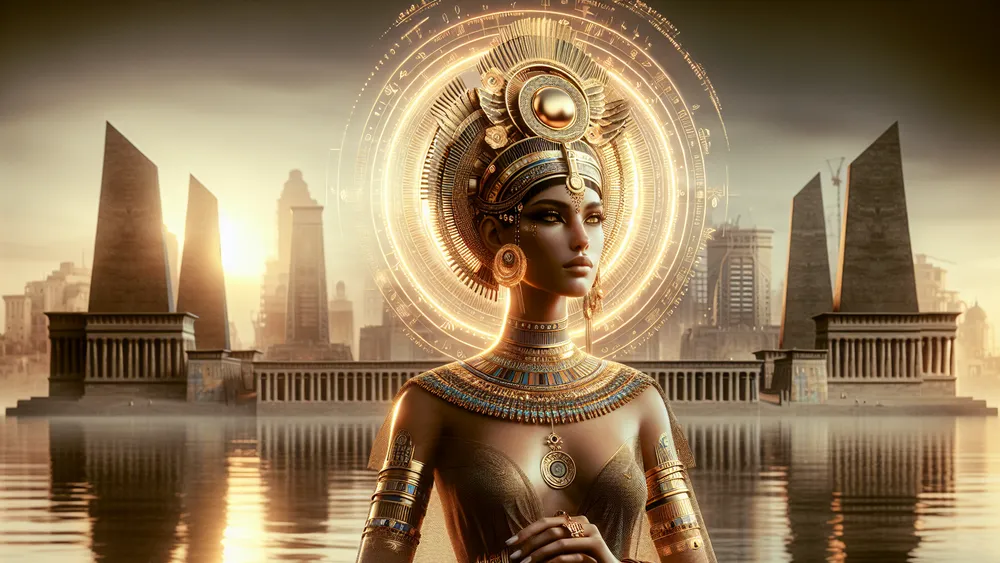
Her impact reaches popular culture too, where she sometimes appears in movies, video games, and even fashion, showing a never-ending interest in her story. These new ways of seeing her not only keep her memory alive, also let new people get in touch with the rich story of Egyptian mythology.
Egyptian Gods Overview
To totally understand what Raet-Tawy did in old Egyptian stories, it helps to know the wider group of gods and goddesses she belonged to. The Egyptian group of gods is full and different, having gods linked with many parts of life, nature, and the universe.
There is the sun god Ra and the goddess of motherhood Isis, each god having a special job in the religious and daily lives of old Egyptians. For a complete list of all the Egyptian gods, you can check this resource that tells their traits, stories, and importance.
This background helps you know more about where Raet-Tawy fits in this complex and interesting mythological structure.
FAQs
1. Who is Raet-Tawy in Egyptian mythology?
Raet-Tawy in Egyptian mythology is a female solar deity often associated with the sun god Ra.
2. What are the symbols associated with Raet-Tawy?
The symbols associated with Raet-Tawy include the solar disk and the uraeus serpent, representing her connection to the sun and protection.
3. How was Raet-Tawy worshipped in ancient Egypt?
How Raet-Tawy was worshipped in ancient Egypt involved rituals, offerings, and prayers conducted in her honor at temples and sacred sites.
4. What is the significance of Raet-Tawy in modern culture?
The significance of Raet-Tawy in modern culture lies in her representation of female empowerment and solar symbolism in contemporary art and literature.

